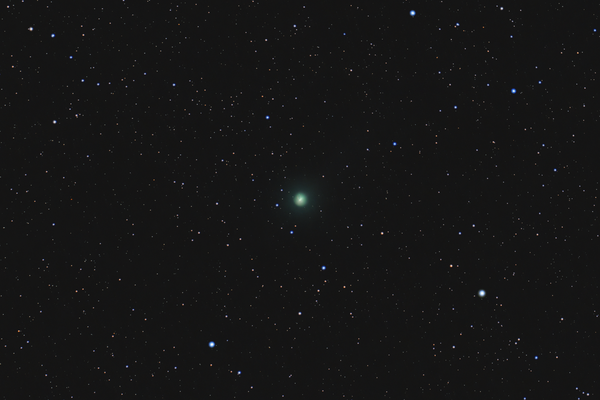February 23, 2024
3 min read
Comet 12P/Pons-Brooks will make its closest approach to the sun this April—right after North America is treated to a total solar eclipse
12P/Pons–Brooks is a Halley-type periodic comet with an orbital period of 71 years. It was discovered in 1812 and later recovered during passages in 1883 and 1954. It is expected to brighten to an apparent magnitude of 4.5 (visible to the naked eye) during its upcoming passage in April 2024.
Brandon Ghany/Horizon Productions SFL/Flickr (PDM 1.0 Deed)
This article is part of a special report on the total solar eclipse that will be visible from parts of the U.S., Mexico and Canada on April 8, 2024.
On April 8 a swath of Mexico, the U. S. and Canada will be treated to a stunning total solar eclipse, the second such eclipse to be widely visible in the U.S. in less than a decade. But this time a comet may photobomb the display.
The dirty ice ball, officially known as Comet 12P/Pons-Brooks, was discovered in 1812. The comet takes a little more than 71 years to orbit the sun in a path that sends it zipping out past Neptune’s orbit and then diving back through the inner solar system. During Comet 12P’s current pass, professional and amateur astronomers have observed a series of outbursts from the hurtling ice ball that appeared to give it horns, earning it nicknames such as “Millennium Falcon” and “Devil Comet.”
On supporting science journalism
If you’re enjoying this article, consider supporting our award-winning journalism by subscribing. By purchasing a subscription you are helping to ensure the future of impactful stories about the discoveries and ideas shaping our world today.
“This is one of the brightest comets in history,” says Rosita Kokotanekova, a planetary scientist at the Institute of Astronomy and National Astronomical Observatory at the Bulgarian Academy of Sciences.
And Comet 12P will make its closest approach to the sun on April 21—less than two weeks…
Read the full article here







